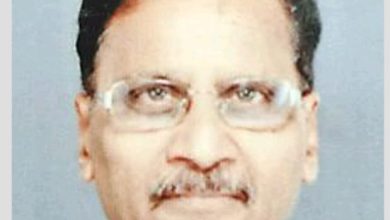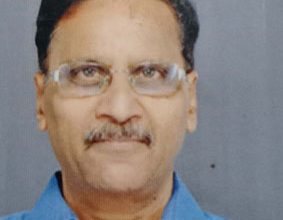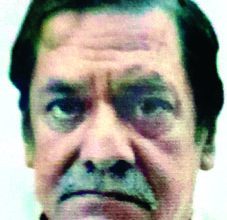True warrior of religion “Hind di chadar” Guru Tegh Bahadur Ji

Rajender Kumar Sharma
The “Guru” tradition has been followed in Sikhism. The spiritual teachings of the ten Gurus have been given a special place in the form of speech in the holy book Guru Granth Sahib. The Ninth Guru of the Sikh Panth, who was also addressed as “Hind di Chadar”, was Guru Tegh Bahadur Ji who did not accept Islam by sacrificing his head for the sake of protecting the religion.
Guru Tegh Bahadur was born on the fifth day of Vaisakh of Vikram Samvat 1678 (April 1, 1621 according to the Gregorian calendar) in Amritsar, Punjab. He was the youngest son of the sixth Sikh Guru, Guru Hargobind ji , whose childhood name was Tyag Mal, he was given the name Tegh Bahadur (mighty of the sword) by Guru Hargobind after showing his bravery in the battle against the Mughals. Tegh Bahadur was married to Mata Gujri on 3 February 1632. Apart from being a fearless, principled warrior, Guru Tegh Bahadur was also a spiritual scholar and poet.
In the 1640s, Guru Hargobind Ji, along with his wife Nanaki, son Tegh Bahadur and daughter-in-law Mata Gujri, moved to their native village Bakala (Amritsar). After the death of Guru Hargobind, Tegh Bahadur took up permanent residence in Bakala with his wife and mother. In March 1664, on the deathbed of Guru Harkrishna Sahib, when asked by his followers who would lead them after him, He replied Baba Bakala, which meant that his successor would come from Bakala. Taking advantage of the ambiguity in the dying Guru’s words, many people claiming themselves as the new Guru came and settled in Bakala. Seeing so many claimants, the Sikhs got confused.
There is also an interesting story behind Tegh Bahadur ji being Guru Tegh Bahadur in a Sikh tradition. Baba Makhan Shah Labana, a wealthy merchant, once prayed for his life and made a tacit promise to himself that if he lived, he would gift 500 gold coins to the Sikh Guru. He arrived in search of the ninth guru. He went from claimant to claimant and presented two gold coins to each guru, confident that the true guru would know what his tacit promise was. Every “Guru” he met accepted two gold coins and sent him away. Then he came to know that Tegh Bahadur also lives in Bakala. Labana also presented two gold coins to Tegh Bahadur like other gurus. Tegh Bahadur gave him his blessings and said, “Labana, these coins are very less than the 500 coins you had promised.” Makhan Shah Labana understood that Tegh Bahadur ji is the real Guru. On hearing Tegh Bahadur ji’s words, Labana ran upstairs and started shouting from the terrace, “Guru lab liya re, guru lab liya re” which means “I have found the Guru, I have found the Guru.” In August 1664, a Sikh congregation reached Bakala and appointed Tegh Bahadur as the ninth Guru of the Sikhs.
His compositions are believed to include 116 Shabads and 15 Ragas which form part of the Bani in Sikhism. His works were included in the Guru Granth Sahib. During his journey, the Guru met Rani Champa of Bilaspur, who offered the Guru a piece of land in her kingdom. Guru bought the piece of land for Rs.500. There, Guru Tegh Bahadur established the city of Anandpur Sahib in the foothills of the Himalayas.
The Mughal ruler Aurangzeb offered him to leave his religion in exchange for his life and accept Islam, but he chose to die laughingly for the sake of religion. Aurangzeb did not approve of anyone disobeying his orders. He got Guru Tegh Bahadur ji beheaded on 24 November 1675 at Chandni Chowk in front of the Red Fort in Delhi. Hence this day is observed as Guru Tegh Bahadur Martyrdom Day and his martyrdom is remembered.
Gurudwara Sis Ganj Sahib and Gurdwara Rakab Ganj Sahib, the holiest shrines of the Sikhs in Delhi, are the sites of the martyrdom and cremation of Guru Tegh Bahadur, revered by every Indian.






